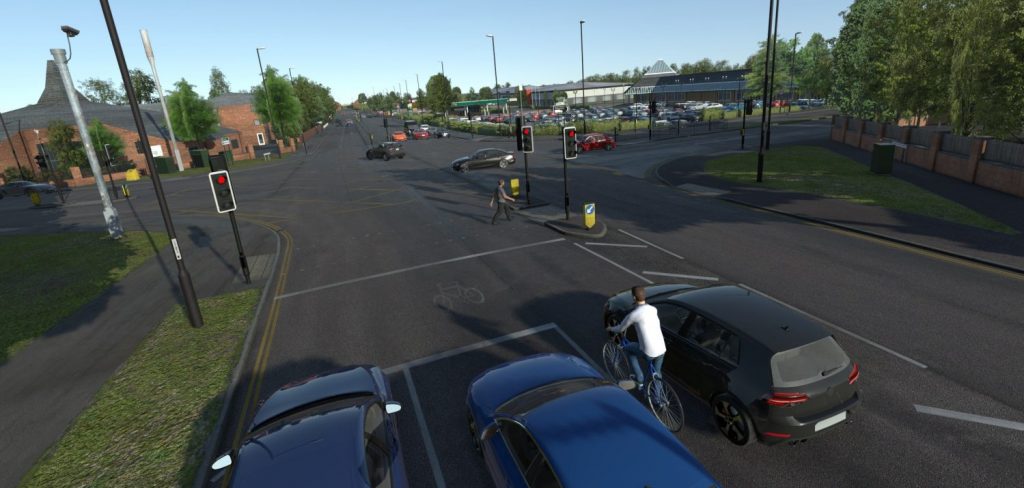Correlation between simulation and real-world performance is a constant concern for test engineers, particularly in the realm of autonomous vehicles. However, thanks to a project between UK-based simulation specialist rFpro and the Warwick Manufacturing Group at the University of Warwick, it is now possible to accurately correlate simulated testing of autonomous vehicles on public roads in the UK.
This development could pave the way for simulation to become a recognized part of the approval process for autonomous vehicles.
“You cannot feasibly validate autonomous vehicles in the real world alone, there simply isn’t enough time or money. We must also exploit the expandability of simulation,” explained Matt Daley, rFpro managing director. “To do that we must trust the simulation results and so it is vital that we regularly check that they correlate with the real world. Our project with WMG enables the industry to do this on public roads for the first time in the UK. This is a big step toward the approval and adoption of autonomous vehicles.”
The company says it has created an accurate digital twin of sections of the Midlands Future Mobility testbed. This model will enable the development of autonomous vehicles in simulation, while WMG, alongside other Midlands Future Mobility partners, will provide testing and research support to allow customers to carry out effective real-world correlation.
“We simulate, validate the results, exploit the simulation further, and then validate and exploit further again. Engineers have been using this technique for decades,” continued Daley. “For example, the first thing a Formula 1 team will do on a Monday after a race weekend is drive the simulator to verify that the simulated vehicle feel and data match the real vehicle feel and data. If the simulator correlates to the real world then they can quickly exploit the powers of their simulation before their next race. It is this same concept being used now to develop autonomous vehicles.”
Importantly, these real-world routes have the necessary infrastructure required for autonomous vehicle testing, including geofenced closed circuit TV, real-time kinematic-corrected GPS and high-capacity wireless connectivity. This provides independently verified ground truth of the real-world event that is critical for correlation.
As part of the move toward simulation, WMG upgraded its 3xD simulator, including adopting rFpro’s software. The organization says the aim of the upgrades was to improve the visualization observed by the driver, improve the realism of the vehicle model and continually consider new emulation techniques for sensors and signals, while having the open approach to minimize the time and effort to integrate these tools together.


